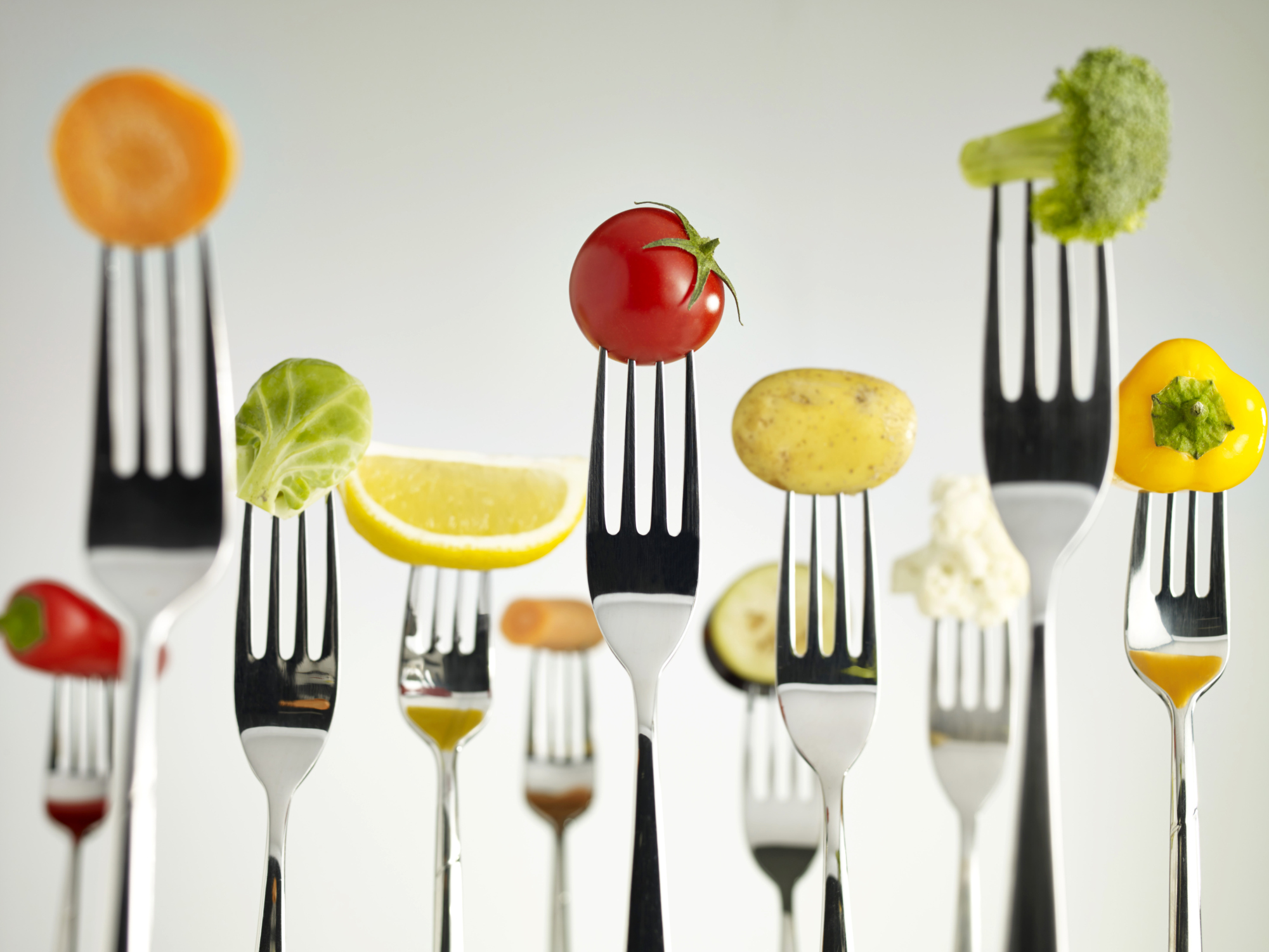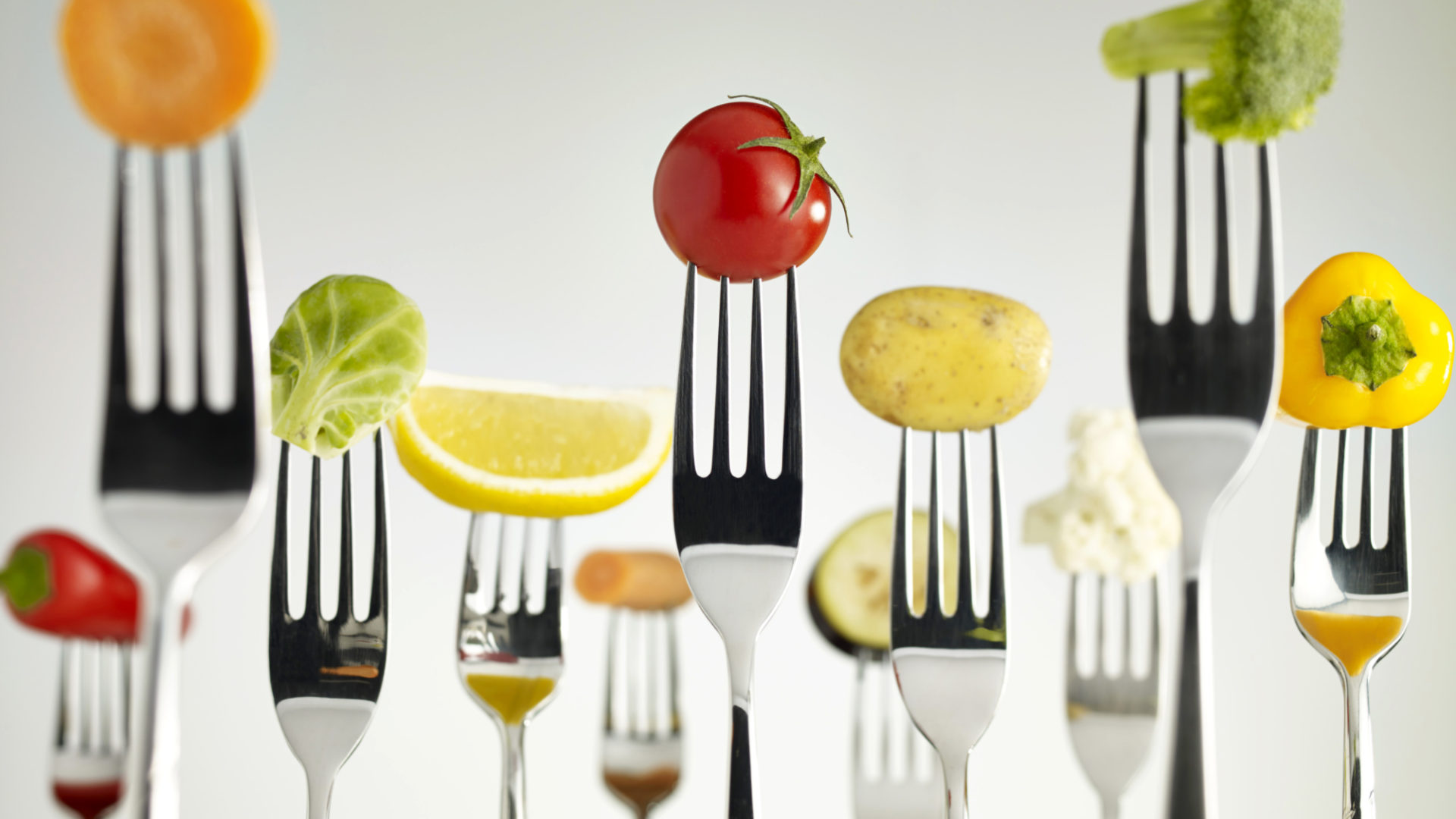
A journey of a thousand miles begins with a single step.
That famous Chinese proverb depicts the small action we can take when embarking on any great endeavor. If that endeavor involves improving your food choices, that single step begins with a fork, and there is no better time to begin than now! March is National Nutrition Month, the annual campaign aimed at educating and empowering Americans into healthier lifestyles.
The theme for 2017 is Put Your Best Fork Forward, encouraging us to put forth our best effort when making changes to the way we eat, and to embrace those changes with purpose and gusto! Just as a long journey of a thousand miles can only be achieved by taking one step at a time, putting your best fork forward suggests starting with small shifts in your food choices that will add up to big changes over time.
If your goal is to improve your health through nutrition, there are many ways to stand out and be your very best. Whether your goal is to cut back on sugar, lower your risks for chronic disease, release unwanted pounds, or increase your energy levels, you will be the most successful by making gradual changes. Start with simple, easy changes and tackle the more challenging ones after you’ve become comfortable and adept in your new lifestyle. Along the way, you will build an arsenal of nutritional knowledge that will sustain you for the rest of your life. With that in mind, here are some tasty and enjoyable ways to put your best fork forward:
Start with Smoothies. OK, so I know you don’t really need a fork to consume a smoothie, but smoothies are a good way to eat more fruits and vegetables, which is certainly in the spirit of putting your best fort forward. The challenge with eating more fruits and veggies is how to make them as fast and convenient as other less healthful options. Smoothies are a great way to pack a lot of nutrition into one convenient meal. You can literally consume a large salad’s worth of leafy greens, such as spinach, Romaine, kale or chard, by blending them in a smoothie along with a couple of servings of your favorite fruits. The delicious flavors of the fruits overpower the bitter flavors of the greens, so you don’t taste them at all. Your body will be overjoyed with the high concentraion of fiber, vitamins, minerals and antioxidants in the fruits and greens. And because all the fiber and pulp of the fruits are retained in the blended smoothie, you can safely consume several servings of fruit without spiking your blood sugar. The additional fiber from the greens helps slow down the absorption of the fruit sugar even more.
A basic green smoothie can be made with just fruit, greens and water—about 2 cups of greens, 2 to 4 servings of fruit, and 2 cups of water is a good guideline. This will make about a quart of smoothie, which can be shared with another person or saved for another meal or snack later in the day. Water is the best liquid for a smoothie, but you can replace some of it with herbal tea or non-dairy milk alternatives. Finally, you may also include other add-ins such as cinnamon, vanilla, ground seeds, protein powders, unsweetened cacao and other superfoods. However, it is best to keep your smoothie simple by selecting only a few add-ins per smoothie to ensure good digestion and absorption of nutrients. You can change what you add on different days to allow for a variety of flavors and nutrients.
Go Whole Grain with Gusto. With all the “new” ancient grains popping up on grocery store shelves, it’s easy to put your best fork forward with it comes to swapping out wheat and white rice with a variety of other nutrient-rich grains. The term “ancient grain” refers to species of whole grains and seeds that have been part of the human diet for 10,000 years, but haven’t been modified over time by plant science.
These include the original species of wheat—Einkorn, Emmer (Farro), Spelt, Freekeh and Kamut—and non-wheat grains such as Quinoa, Red and Black Rice, Blue Corn, Buckwheat, Barley, Rye, Oats, Amaranth and Millet. Research shows that many ancient grains are higher in protein, vitamins, minerals and antioxidants, and are less allergenic than modern grains such as wheat, yellow corn, and rice. Modern grains, especially wheat, have been extensively altered over time to make them easier to grow and process into flours and starches that are used in breads, cereals, pastas and baked goods. Because of the changes modern grains have undergone, they have less nutrition and some people have developed allergies to the cross-bred, genetically altered proteins.
All whole grains can be cooked like rice—add 1 cup dry whole grain to 2 cups water or broth, bring to a boil, then reduce heat, cover and let cook untl the liquid has been absorbed and the grains are tender and chewy. They’re delicious as a hot breakfast cereal with a splash of almond milk and raw honey as a nice change from the usual oatmeal, or use them as a base for a “grain bowl” with cooked veggies and beans or meats. They’re also great in soups, salads, side dishes, stuffing for bell peppers or squashes, and even desserts like tapioca pudding.
Be a Planner and a Prepper. By taking the time to plan and prepare food ahead of time, and always having something healthy in your car, purse, desk drawer, lunch box, etc., your ability to make healthy food choices greatly increases. Healthy snacks like a baggie full of unsalted nuts are great to keep in the car because they won’t melt. Fresh fruits, plain yogurt, string cheese, hummus and cut up veggies make great snacks to keep in the frig at home or the office. Stock your pantry with canned beans, canned salmon or tunda, and keep cooked grains and frozen vegetables in the freezer to pull out for quick easy meals.
Plan which meals and snacks you want to have each week, then set aside some time to prep a few things to that you are not starting from zero each day in the kitchen. Ask yourself what you can do on the weekend, or in the morning, or in a free five- or ten-minute block of time in the afternoon or while you’re on the phone that will help you get ahead of the cooking curve for the week. Maybe it’s cooking up a pot of brown rice or quinoa to use in several meals throughout the week or to freeze for future meals. You can wash and dry a pile of salad greens, chop an onion, or just set out all the spices you’ll need. Fill up individual containers with all the ingredients for making your daily smoothies and keep them in the frig or freezer. This makes daily smoothies a snap to make—just plop the ingredients into your blender, add the liquids, snap on the cover, turn on the blender and go!
One more way to plan is to not bring tempting unhealthful snack foods into the house. It’s easier to resist cookies and chips if they’re not in your pantry. Healthy eating becomes much simpler when you make sure your plan for the week includes thoughts on what you can do ahead of time, and when you can set aside the time to do it.
Celebrate National Nutrition Month this March by taking that single step. The little choices you make each day matter. What will you put on your fork today to make your health a top priority?

